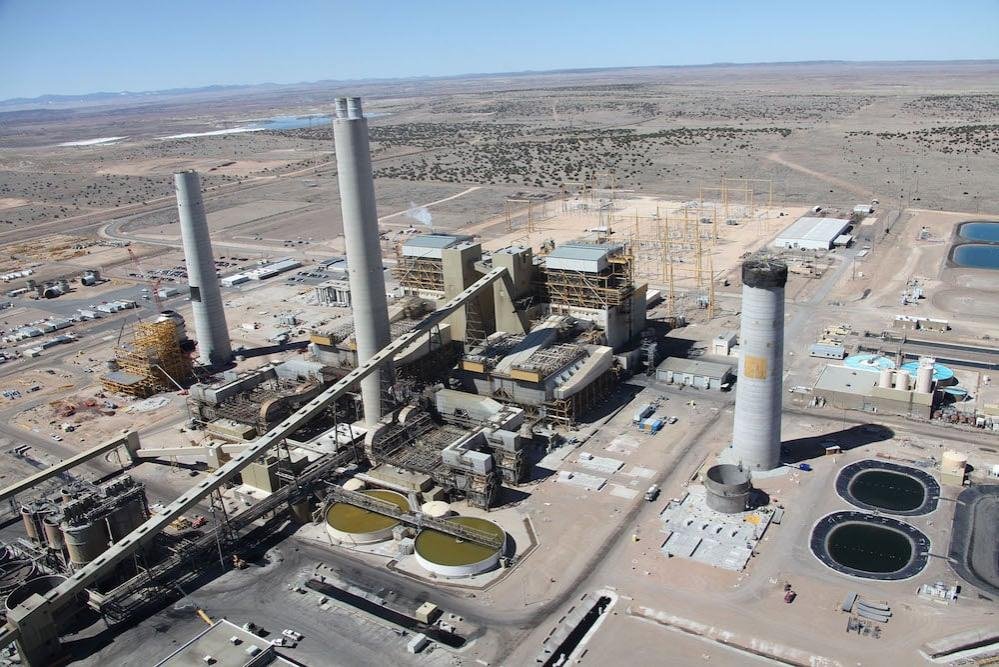arizona
Az’s Apache Generating Station Among 66 Coal Plants Granted EPA Air Pollution Exemption

The Apache Generating Station, one of Arizona’s last coal-fired power plants, has received a waiver from updated Environmental Protection Agency (EPA) standards for toxic pollutants, a move granted by the Trump administration. This exemption applies to 66 plants across the country, raising concerns among environmentalists about potential adverse effects on air quality and public health.
Power companies in Arizona have been transitioning away from coal for years, with the last planned closure set for 2032, coinciding with new federal requirements mandating a 90% reduction in carbon emissions. However, Arizona’s extreme summer heat has consistently pressured electric supply, prompting reliance on older, less clean technology during peak demand.
The standards in question stem from the Mercury and Air Toxics Standards (MATS), part of the Clean Air Act established in 1970. The waiver permits the Arizona Electric Power Cooperative (AEPCO) to adhere to the 2012 MATS standards rather than adhere to the stricter guidelines set to take effect in April 2024. While natural gas generally emits fewer pollutants than coal, it remains a source of carbon dioxide emissions, which face scrutiny under the Biden administration’s environmental initiatives.
AEPCO defends the older standards as sufficient for maintaining safe pollution levels, asserting that compliance with the latest regulations would be “technically unworkable” and excessively costly. Communications director Carolyn Turner emphasized the necessity of the waiver for continued power delivery in Southeast Arizona, citing a 2020 EPA study that reportedly validated the adequacy of the prior MATS standards.
The EPA, however, argues that the tightened standards will lead to significant pollution reductions, projecting a decrease in harmful emissions, including up to 1,000 pounds of mercury annually by 2028. Turner acknowledged that the updated guidelines aim to mitigate health risks linked to power plant emissions but maintained that the existing monitoring technologies might not sufficiently measure fine particulate matter at the levels prescribed by the new rules.
In recent months, AEPCO announced intentions to cease coal usage entirely by 2027 at the Apache station, transitioning to natural gas. Arizona still operates two other coal plants: the Springerville Generating Station and Coronado Generating Station, both situated northeast of Phoenix. Springerville, particularly, drew attention as one of the state’s most polluting plants, generating nearly 1,800 megawatts.
Amidst increased demand, particularly during summer months when temperatures often exceed 110 degrees, stakeholders recognize the vital role coal has played. Pam Syrjala from Salt River Project remarked on the reliability of coal plants, even as they commit to a phased retirement by 2032.
In addition to local plants, Arizona companies partially own the Four Corners Power Plant in New Mexico, the largest coal supplier to the state. Recent plans for seasonal operation were halted due to market conditions, despite the plant’s potential environmental benefits during peak demands.
The closure of coal plants has sparked a heated debate about the social and economic ramifications. Navajo President Buu Nygren highlighted the annual $40 million loss to the Navajo Nation, emphasizing that rush decisions could have significant job impacts. Meanwhile, some legislators have called for the reactivation of both the Navajo Power Plant and other coal facilities, an initiative met with opposition from environmental groups.
Nicole Horseherder, an environmentalist with Tó Nizhóní Ání, criticized such proposals, arguing that reinstating coal operations would present numerous challenges and environmental concerns. As coal’s dangers become clearer, with studies linking it to various health risks, stakeholders must navigate the complexities of transitioning to cleaner energy sources while addressing the immediate economic impacts on communities reliant on coal.
Despite the absence of active coal mining in Arizona, the legacy of past operations still influences policy and energy strategies. The recent closures of the Black Mesa and Kayenta mines further underscore the shift away from fossil fuels, with the Navajo Nation now endeavoring to seek more sustainable energy alternatives.


















